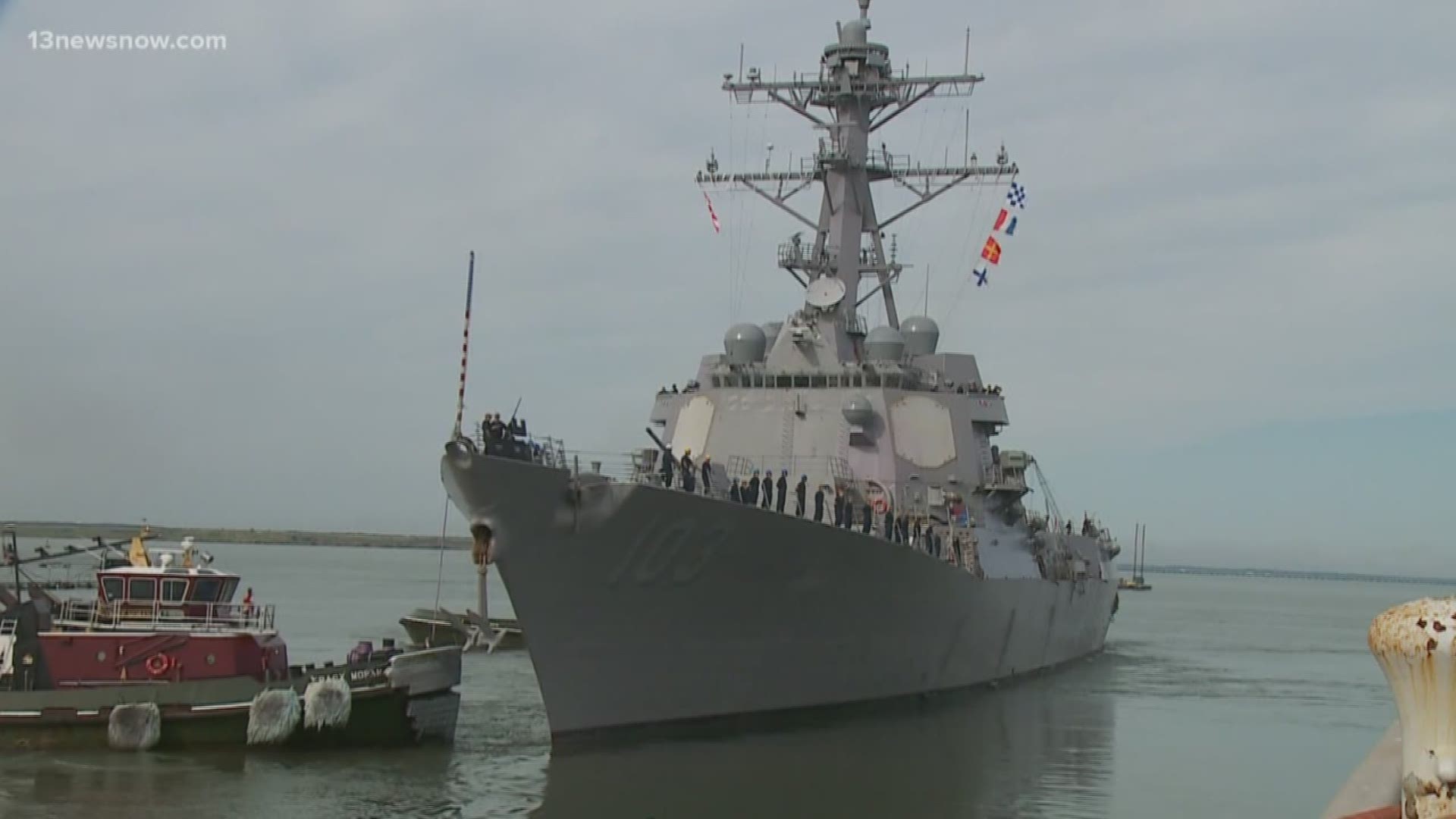WASHINGTON — The Department of Defense has concluded that 53 of its 79 bases face current threats from flooding, including Langley Air Force Base, Naval Air Station Oceana, Naval Support Activity Hampton Roads, and, Naval Station Norfolk.
"We do know we're going to have to deal with sea-level rise, and it turns out a lot of our bases are on the shore," said Rep. John Garamendi (D-California). "One option is to see where seawalls might fit. The other is to outfit everybody with waders. One of those two things is going to have to be done because we've already seen the sea level rise there."
In addition, a new report this week from the Government Accountability Office concluded more than 100 military installations nationwide are at risk for not having enough water to accomplish their missions. This includes training, cleaning equipment, suppressing fires, drinking, and bathing.
It's also not just a U.S problem, it's a global problem. Between 2008 and 2012, over 144 million people were displaced by a sudden onset of disasters in more than 122 countries.
"Climate extreme weather events often tend to be that threat multiplier," said Maria Langan-Riekhof, Director of the Strategic Futures Group at the National Intelligence Council. "And in countries in cases where there is corruption or poor services, that just ratchets up the possibility of greater instability."
There was one piece of good news to emerge from the House Armed Services Committee meeting: The 2020 National Defense Authorization Act includes 133 million dollars to address resilience, requiring major bases in the next three years to develop master plans to deal with climate impacts.

